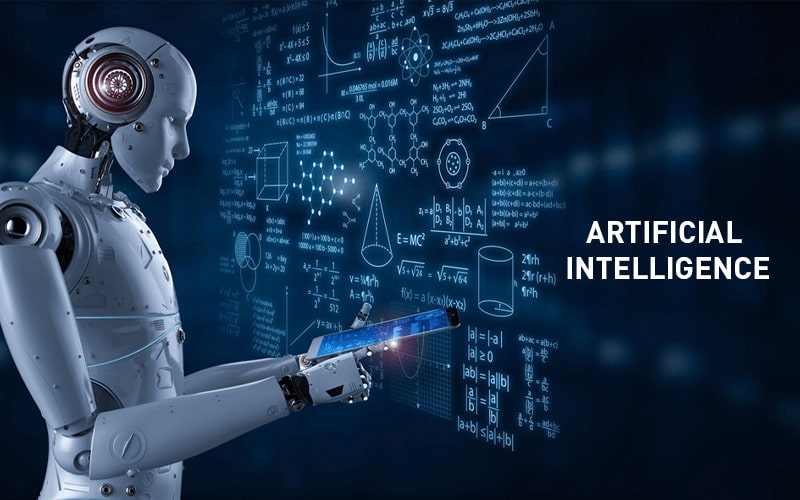Machine learning and deep learning are emerging as major areas experiencing significant growth as the world of AI continues to evolve. Machine learning algorithms are growing more sophisticated as the volume of available data increases, improving the performance and accuracy of AI systems.
Furthermore, advances in natural language processing (NLP), Conversational AI – powered by Large Language Models (LLMs), and Generative AI enable machines to perceive and interact with humans in applications such as chatbots and virtual assistants.
The amalgamation of AI with other cutting-edge technologies such as quantum computing, cybersecurity, metaverse, data mesh, and so on opens up a world of new possibilities for creativity.

Quantum Computing and AI
The integration of AI with Quantum Computing has enormous potential for increasing the speed and precision of quantum algorithms, opening up new avenues for data analysis, simulation, and optimisation. Among the ways AI can improve quantum computing are:
1. Leveraging quantum computing to train neural networks to improve optimisation methods
2. Allowing for efficient searches of large datasets, which leads to increased pattern recognition
3. Superior performance in algorithms that are above the capabilities of traditional computers, such as parallel complicated automation involving data manipulation
4. Using more powerful quantum computers to enable AI to manage enormous volumes of images and unstructured data
5. Resolving explainable AI difficulties that require enormous permutations and combinations to find optimal paths, which quantum computers can tackle efficiently
6. Applying quantum computing to optimise reinforcement learning for faster and more rewarding results
7. Examining the performance of several quantum circuits with AI algorithms to uncover patterns that lead to optimal results, hence directing the construction of efficient quantum circuits


AI can help to create more immersive and interactive virtual worlds in the metaverse. Here are some examples of areas where AI can be useful:
1. Analysing user behaviour and preferences in order to improve and adapt the virtual environment
2. Natural language processing is being used to provide seamless communication between users and virtual entities.
3. AI algorithms are used to generate content for virtual environments and data.
4. Integration with smart glasses, wearables, gestures, and voice commands is made easier.
5. 3D engines, virtual reality (VR), augmented reality (AR), and geographic mapping technologies are used.
Artificial Intelligence in Cybersecurity

AI is already vital in cybersecurity, identifying and combating cyber-attacks and threats. As cyber threats become increasingly sophisticated, artificial intelligence (AI) can improve the speed and accuracy of threat detection and response. This results in automated defences against assaults and increased data security. Here are some instances of how artificial intelligence is applied in cybersecurity:
1. Using Perceptron to identify email spam 2 . Using Support Vector Machines to detect spam 3. Making use of Nave Bayes for spam detection 4. Detecting phishing using logistic regression and decision trees 5. Using NLP approaches to detect spam 6.Identifying network anomalies like the Botnet kill chain 7. Using Hidden Markov Models (HMMs) to detect metamorphic malware 8. Deep learning techniques such as Convolutional Neural Networks (CNN) and Generative Adversarial Networks (GAN) are being used to detect complex viruses.

Blockchain and artificial intelligence

AI can dramatically improve the efficiency and security of blockchain transactions. Here are some instances of how AI can assist:
1. Analysing blockchain data while protecting privacy and security 2. Predictions and recommendations for Blockchain settings 3. Detecting decentralised system fraud 4. Using AI algorithms to generate expected data insights and safe data-sharing within the blockchain 5. Optimising supply chain operations through demand prediction and delivery team optimisation within the blockchain network 6. Personalised product suggestions via decentralised identification systems, with individuals retaining ownership of their data 7. Using artificial intelligence to analyse biometric or identity data in order to validate the identity of systems within the Blockchain network 8. Using AI to gain data insights in smart contract rule engines.
Artificial Intelligence and Data Mesh

AI has the ability to improve the usefulness and security of data mesh networks by increasing the speed and accuracy of intelligent data processing, analysis, and data exchange. Among the AI uses in data mesh are:
1. Using AI at many stages of the data mesh, such as data discovery, data transformations, data governance, and data quality checks
2. Using artificial intelligence algorithms in conjunction with remote data processing systems
3. To improve data processing, trained models for specific domains are used.
4. Using generative AI to develop data governance policies and security standards
5. Monitoring data consumption trends, tagging and classifying personally identifiable information (PII) data using AI models
6. Detecting harmful network activity and allowing automated responses to security threats
7. Using natural language processing (NLP) query-based services for data processing
8. Object identification and other computer vision techniques are being used in automated factories, smart systems, and the retail and commerce sectors.
9. LLMs, generative AI, and conversational models are used to build transformation templates, data pipelines, data flows, and analytical outcomes automatically.
To summarise
We can improve the performance of many technologies and develop novel problem-solving approaches by leveraging the potential of AI. The incorporation of AI into quantum computing, metaverse, cybersecurity, blockchain, and data mesh yields numerous benefits such as reduced manual intervention, improved operational efficiencies, predictive outcomes, enhanced security measures, and the creation of valuable content and code templates.


